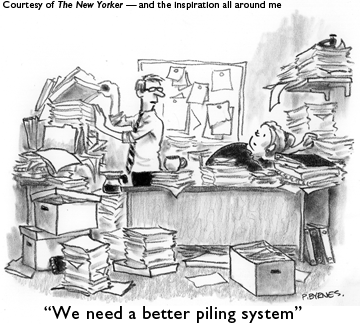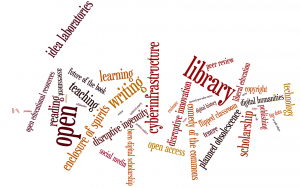I’m not an economist by training or even by disposition, but my job requires me to think in economic terms on a regular basis. My latest challenge is to figure out a pricing scheme for charging for printing on campus. Free printing, like free anything, is an example of what economists call the tragedy of commons, where a public good is overconsumed because there is no incentive for the individual consumers to moderate their consumption.
Why should students who pay upwards of $50,000 a year to attend our school have to be nickeled and dimed by being asked to pay for the print-outs that they need to make because their professors assigned them 1,000 pages of electronic reserves, or asked them to do peer-review paper exchanges of their 20 page paper with 5 of their classmates?
One answer is environmental. Because there is no cost associated with printing, our students (and the rest of the community, for that matter) print roughly 1,000,000 pages every month. They print out their reserve readings over and over again because they forget to bring them to class, or because they forgot what printer they printed them out on, or because the copy they already printed out is in their dorm room. They don’t do soft proofs of their papers on screen, but instead print out multiple drafts to get the layout and formatting just right. If there was an actual out-of-pocket cost to printing, much of this printing would just stop.
One answer is accidental. If one were to look back over the history of printing in the last fifty years, you would discover that up until the last years of the 20th century, the idea that your college would cover this sort of expense would not have even come up. Before photocopiers and laser printers, students got their reading materials from the bookstore or the library, and they produced their written work on typewriters or by long-hand. With the advent of the photocopier, students could start to (on their dime!) make copies of reserve readings, and bookstores could produce coursepacks that students could purchase. As for typing, students bought their typewriter ribbons and typing paper (and white out!) usually at the bookstore. With the advent first of the laser printer, and then of the web, suddenly the paradigm shifted. Some schools quickly figured out that free printing services created the aforementioned moral hazard, and immediately imposed charges.
Middlebury missed that boat.
So here we are having to think about how to bring some order to what is by all accounts a messy situation.
Question One: Should we institute a quota? Some schools provide students with a quota, and only charge them for their printing after they exceeed their quota. Some economists argue that this is a bad idea, as it creates a new, albeit less severe, moral hazard.
Question Two: If there is a quota, should it be the same for all students, or should it vary based on the amount of writing or e-reserves assigned in the course? or on financial need?
Question Three: In our current economic climate where we are having to cut budgets, what is the objective in introducing a charging scheme? Should our pricing be so low that printing costs are still subsidized, but just less so than our present system of not charging at all? Should we try to recover all the costs associated with printing? Should we be so bold as to try to change our printing system from a money-loser to a revenue source, allowing us to (for example) increase the amount of internet bandwidth or wireless in the dorms?
Question Four: How do faculty connect to this? In the same way that responsible faculty factor in the cost to the student when choosing texts for a class, should faculty begin to factor in the printing cost when assigning reserve readings and writing assigments?
There is some urgency to these questions, as our intentions are to introduce a quota and charging scheme in the Fall of 2009. We’ll be spending the spring thinking about these questions, talking with faculty, students, and other schools to figure out the right way to proceed. Use the comment feature of this blog to record your own thoughts, or track down a member of SLAC (the student LIS advisory committee) to voice your opinion.



